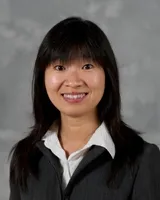Ng, Nga Lee
Contact Information
- ng@eas.gatech.edu
- Personal Site
- http://ng.chbe.gatech.edu/
- Phone
- 404-385-2148

Dr. Nga Lee (Sally) Ng
Professor
Awards
“New Hot Paper” recognition, Thomson Reuters, 2011. Link Sheldon K. Friedlander Award, American Association for Aerosol Research, 2010. ACCESS IX participant: Atmospheric Chemistry Conference for Emerging Senior Scientists (in conjunction with the Atmospheric Chemistry Gordon Research Conference), 2007. 3rd Place Winner, Ultrafine Particle Graduate Student Research Competition, South Coast Air Quality Management District, 2006. Academic Achievement Medal, Hong Kong University of Science and Technology, 2002. The Hong Kong Jockey Club Scholarship (full undergrad scholarship), Hong Kong Jockey Club, 1999-2002.Education
B. Eng. 2002, The Hong Kong University of Science and Technology M.S. 2004, California Institute of Technology Ph.D. 2007, California Institute of Technology
Research
Air Quality Health Effects Dr. Ng joined the EAS faculty in fall 2011. Prior to coming to Georgia Tech, she worked at Aerodyne Research Inc. in the Center for Aerosol and Cloud Chemistry. Dr. Ng’s research interest is in aerosol chemistry. Her research focuses on both laboratory experiments and field measurements to understand the formation and evolution of atmospheric aerosols. This research includes conducting chamber experiments in which specific compounds of interest can be isolated and studied under simple, well-controlled oxidation environments, allowing for a more detailed and direct characterization of the composition, chemical, and physical properties of aerosols. Dr. Ng is also involved in field measurement campaigns and integrated analysis of multidimensional and multiple worldwide mass spectrometer datasets to investigate the chemistry and life cycles (sources, processes, and fates) of ambient aerosols. Additionally, she works on the development and characterization of advanced aerosol instrumentation, which can routinely characterize and monitor the mass and chemical composition of non-refractory submicron aerosols in real time.